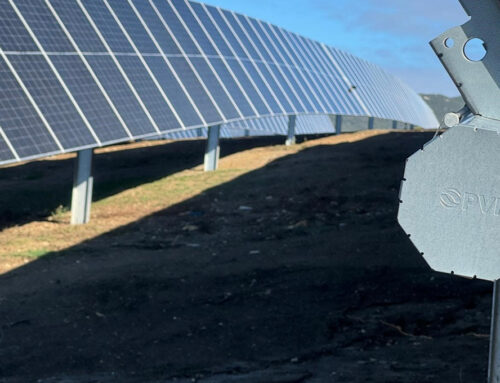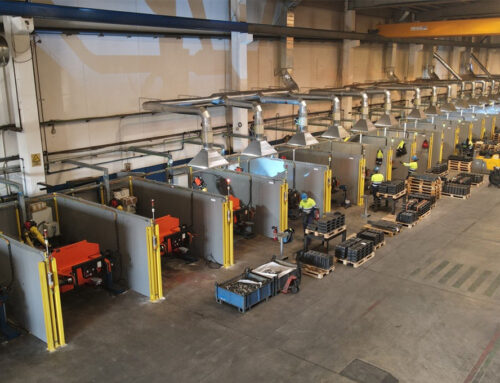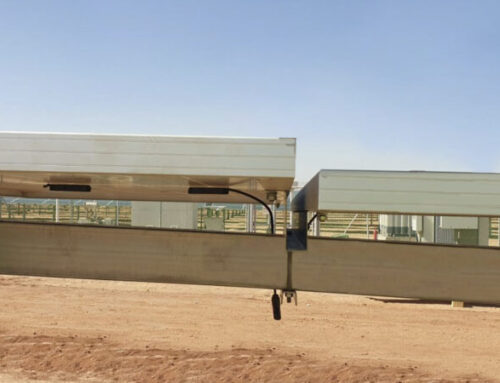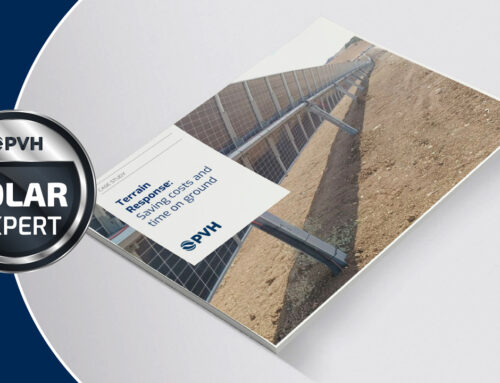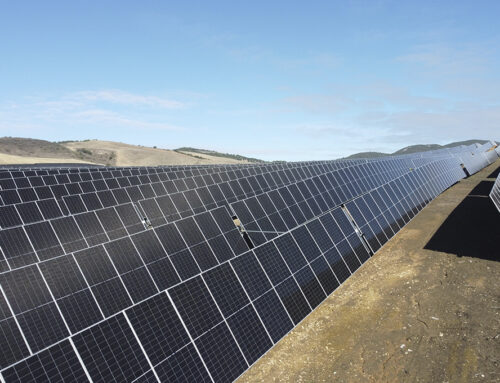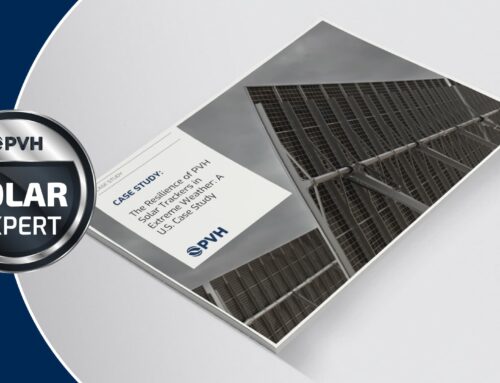Stow Strategies for PVH Trackers: A quick guide to understand different stow strategies
06/11/2024
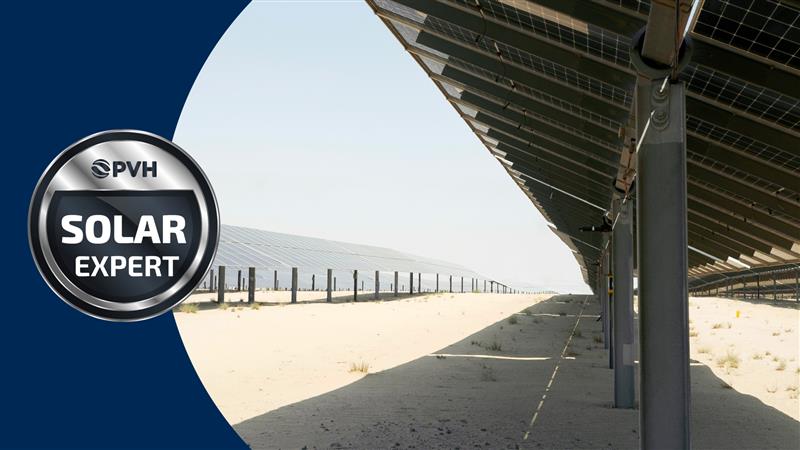
In utility-scale solar plants, effective stow strategies are essential for maximizing energy capture and protecting solar tracking systems from adverse weather conditions. PV Hardware (PVH) trackers use advanced algorithms and cutting-edge technology to automatically respond to environmental changes. These stow strategies, addressing conditions from wind and hail to snow and construction, ensure PVH trackers remain resilient under dynamic circumstances while maximizing operational efficiency. This blog delves into the various stow strategies used in PVH trackers.
1. Construction Stow
The construction stow angle is a fixed tracker position designed to withstand wind events once panels are installed, providing optimal wind resistance. This position is critical because, during construction, the tracker cannot move freely. Unlike outdated designs that rely on limited intermediate positions, PVH’s advanced trackers use the normal stow position during construction, offering maximum protection against peak wind speeds without needing to face the wind.
Additionally, the TBox—a self-powered control hub—can trigger the stow command, allowing an immediate response as soon as the first modules are installed. Operators can also manually adjust tracker positions through ProInsights (SCADA), providing flexibility to meet specific on-site requirements and maintain enhanced operational control.
2. Wind Stow
A critical stow strategy is wind stow mode, which protects solar trackers from high wind speeds. In this mode, the TBox system automatically detects wind speed and direction via ultrasonic anemometers and sends commands for the tracker to enter the wind stow position. Operators also have the option to manually activate this command through the SCADA system.
Older tracker designs often require trackers to face into the wind, which can be problematic depending on wind direction. These systems typically take around five minutes to reach stow, which may be too slow to prevent potential damage. Additionally, older systems must work against wind forces to reach stow, risking delays if the tracker lacks sufficient force. When wind comes from the opposite direction of sunlight, energy generation is also compromised, as trackers must face the wind instead of the sun.
In PVH’s advanced design, trackers don’t need to face the wind, reducing stow time to under 2.5 minutes and working with wind forces rather than against them. If wind direction opposes the sun, the tracker stows facing the sun, maintaining maximum generation even under high-wind conditions.
3. Backtracking Mode
Backtracking is a strategic movement designed to reduce shading between tracker rows during early morning and late afternoon hours. When the sun is low on the horizon, backtracking allows trackers to adjust their angles slightly, preventing shadows and increasing energy production.
Outdated designs apply backtracking without accounting for site undulations or varying angles and slopes across trackers. Some systems use partial site data, such as auxiliary PV panels, to optimize backtracking, but this often leaves other areas vulnerable to shading. A shadow on one module can affect the entire string’s generation.
In PVH’s advanced 3D backtracking, all tracker coordinates are stored in the TBox. When backtracking, the 3D model of the site is taken into account to significantly reduce shadows along the entire tracker length, maximizing site generation potential.
4. Hail Stow
Extreme weather events like hailstorms can severely damage solar panels. To protect the system, the hail stow position is activated when the TBox detects a hail event, moving trackers to a safer position that minimizes exposure to hail impacts. Operators can also manually activate the hail stow command through SCADA as a preventive measure before a hailstorm hits, helping to avoid costly damage and extending the lifespan of the solar modules.
5. Snow Stow
In regions with frequent snowfall, the snow stow strategy is essential. When snow sensors detect accumulation, the TBox automatically commands trackers to move to maximum tilt, positioning panels to prevent snow buildup. Once snow is cleared, trackers return to their operational positions without manual intervention, maintaining energy production during winter months and reducing structural stress from snow loads.
6. Diffuse Stow
Solar tracking systems are most efficient with direct sunlight, but what about overcast or cloudy days? The diffuse stow strategy addresses this. When the TBox detects a diffuse sunlight scenario, the system positions the trackers to capture scattered light as effectively as possible.
This mode is especially beneficial in regions with variable weather, where cloudy conditions may limit direct solar exposure. By adapting to available diffuse light, trackers continue generating energy even on cloudy days.
7. Night Stow
When the sun sets, PVH trackers enter night stow mode. This strategy helps preserve battery charge and prevents unnecessary system wear by minimizing movement during nighttime. The TBox sends the night stow command automatically, and the system remains in this position until sunrise or until an alarm is triggered. Night stow is a simple yet effective strategy to prolong system life and reduce operational costs when solar generation is not possible.
PV Hardware’s advanced stow strategies are designed to ensure solar tracking systems’ reliability and longevity. From wind and hail protection to maximizing solar capture with backtracking and diffuse modes, each stow position serves a critical purpose in maintaining system integrity and maximizing energy output.
These automated responses, powered by the TBox and DBox control systems, provide flexibility, security, and efficiency—ultimately delivering more value to utility-scale solar operations. PVH leads the way with smart technology that adapts to changing environmental conditions, ensuring a resilient and sustainable future for solar energy.

